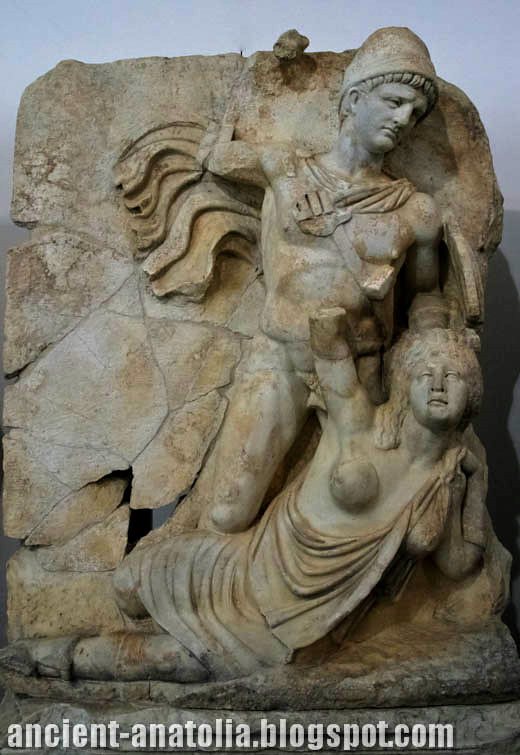
Relief at Sebasteion: Ancient Aphrodisias School of Sculpture...
Naked warrior Claudius is about to deliver a death blow to a slumped figure of Britannia. He wears helmet, cloak, and sword-belt with scab-bard. Britannia wears a tunic with one breast bare - like the Amazon figures on which she was modelled. The inscription reads: Tiberios Klaudios Kaisar - Bretannia. - Museum of Aphrodisias, Turkey.